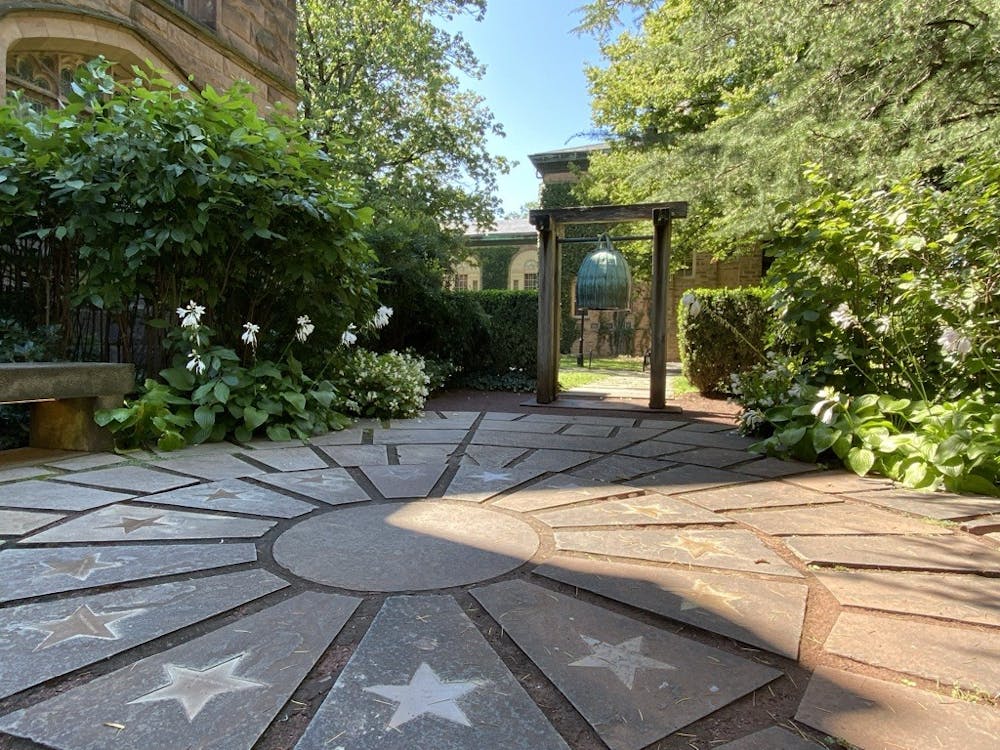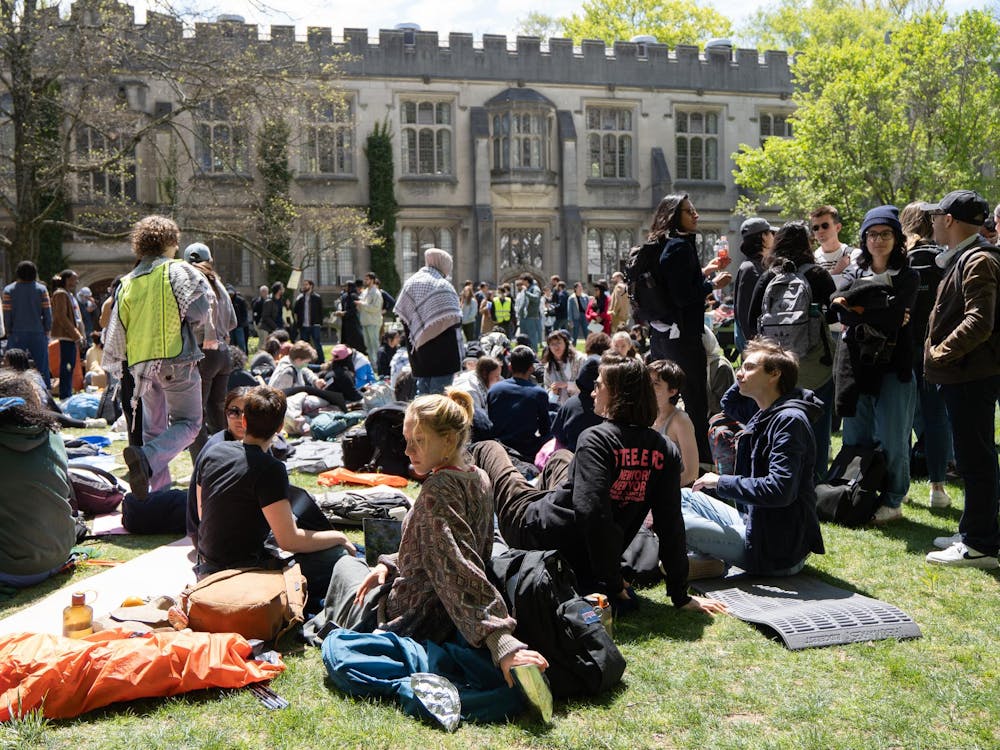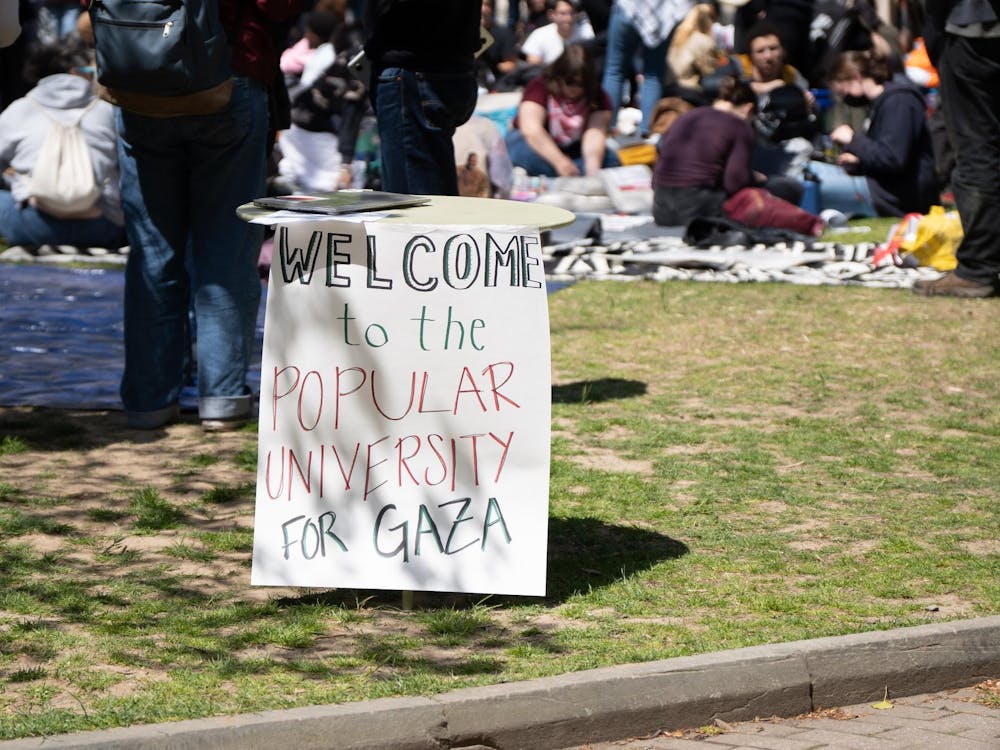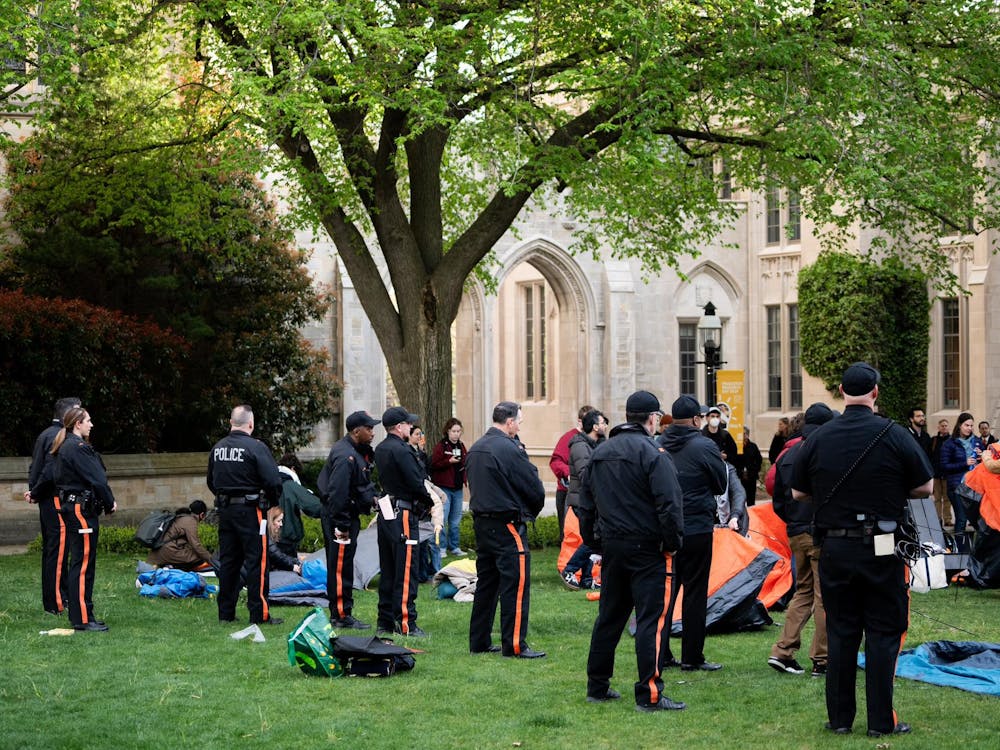The following is a guest contribution and reflects the author’s views alone. For information on how to submit to the Opinion Section, click here.
Content Warning: The following article includes mention of student death. University Counseling services are available at 609-258-3141, and the Suicide Prevention Lifeline is available 24/7 at +1 (800) 273-TALK (8255). A Crisis Text Line is also available in the United States; text HOME to 741741. Students can contact residential college staff and the Office of Religious Life for other support and resources.
In April 2015, one of my fellow students died on William & Mary campus. For weeks after the tragedy, waves of shock and anguish reverberated while the topic of mental health dominated campus conversations. Earlier that spring, Humans of William and Mary, a student group I was involved with, had launched a creative storytelling project that culminated in an installation in the middle of campus — a shed with a transparent roof and plywood walls painted white on the inside, intended to welcome graffiti. After the tragedy, those walls started to fill up with messages of care and reflection until every last corner was covered with sketches, confessions, and musical notes. A message in red, signed “D.K.” reads:
I feel like a lot of people here — more than average — know what it’s like to be in a deep hole, trapped in the dark, feeling escape is impossible. But then you make it out. And you realize that nobody should have to feel like that, much less feel like that alone. And that’s why I think so many people here — more than average — really care and really want to help. Because human kindness won’t fix your GPA or heal your sick mind, but it’s the closest, sweetest thing.
Initially mired in frustration and disorientation, my own grief found its bearings in messages like that and transformed into a motivation to listen, care, and heal together with my peers. Many students came to spend minutes, even hours, in and around the installation to express themselves and be heard, or simply to feel at home. The shed, by sheer fortuity, became a spontaneous sanctuary of love. It was not another outlet of catharsis intended to restore business-as-usual, but rather a gathering place where sentiments coalesced to germinate an entirely different way of seeing strangers and holding on to each other, where belonging overcame loneliness.
This year, several Princetonians left us under heartbreaking circumstances. Spaces for listening, sharing, and remembrance were created by family and friends of the deceased. Our campus also has mechanisms of care and resilience, many of which strengthened or reformed since the start of the pandemic. Listening circles at the Counseling and Psychological Services (CPS) have become a resource that Princetonians can count on during times of collective distress. Vigils and other religious services have also helped our community remember or build solidarity in times of need. For me personally, the physical space of Carl A. Fields Center and the events hosted under its roof have brought me both solace in difficult times and invaluable perspectives on issues of belonging.
But right now, we also need a place, centrally located on campus and online, that invites every Princetonian to pause, reflect, and practice listening to each other. It should not be closed off in sanitized isolation, but rather actively engaging. Many of us are grappling with difficult questions about the state of care and community on this campus. In this place of remembrance, we will remind each other that every community member has an obligation to care and that there are conduits through which effective care can be channeled.
Moving forward, an educational framework of care and wellbeing requires centering student experience not only around academics, athletics, extracurriculars, and social activities but also around relational growth and community development. The University is taking some steps to foster a more resilient sense of belonging among students, including the transition to a full four-year residential college system. The residential colleges will have the opportunity to better serve as a locus of collective growth and mutual support for all students. The University can also create a new integrated office of wellness to rethink how it can guide students, faculty, and staff members through practices of mutual support and self-care with the purpose of building their sense of belonging at Princeton and beyond.
Finally, I suggest that the University create a memorial for souls prematurely lost and offer grieving families a way and a place to commemorate their loved ones on our campus for generations to come.
Not only do names engraved into campus structures delineate the continuation of a scholastic tradition, but they serve to educate students and visitors by personifying historical conditions and events through which important values were enshrined. A plaque in front of the historic President’s House, known today as the Maclean House, was erected in 2019 to commemorate the 16 enslaved people who lived and worked there for more than half a century. The bell of remembrance and 14 metal stars between Nassau Hall and East Pyne Hall record the pain that will forever pulsate from that senseless September day in 2001. They stand as a beacon of peace by reminding us of the visceral violence of war.
As our community mourns the premature passing of one life after another, some on this very campus, I believe the University should allow moments of collective grief to crystallize into permanent symbols of remembrance. Under diligent stewardship, this campus will begin to reflect the values of equity and inclusion that today’s Princeton education strives to instill. While surrounded by the glory of the well-endowed and well-accomplished, students should also feel embraced by the palpable humanity of those that are just like them. More than intellectual or athletic distinction, this humanity comprises a fundamental reverence for the inherent meaning of every life. With symbols of remembrance dedicated to those who will never have the opportunity to become aspirational versions of themselves, as Nobel Laureates or generous entrepreneurs, we send students the resounding message that they matter now — every human life matters, right here and right now.
Ben Zhang GS’22 is a lecturer in genomics and the manager of the Integrated Science Curriculum. He can be reached at xinziz@princeton.edu.










